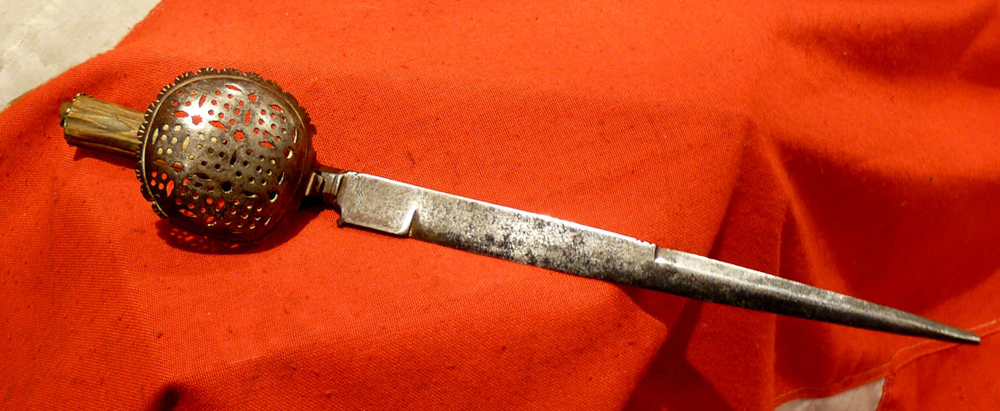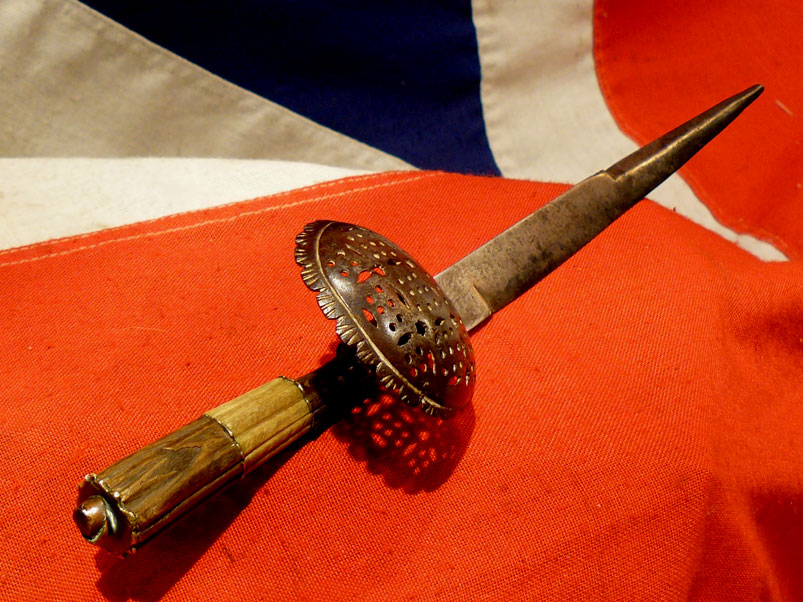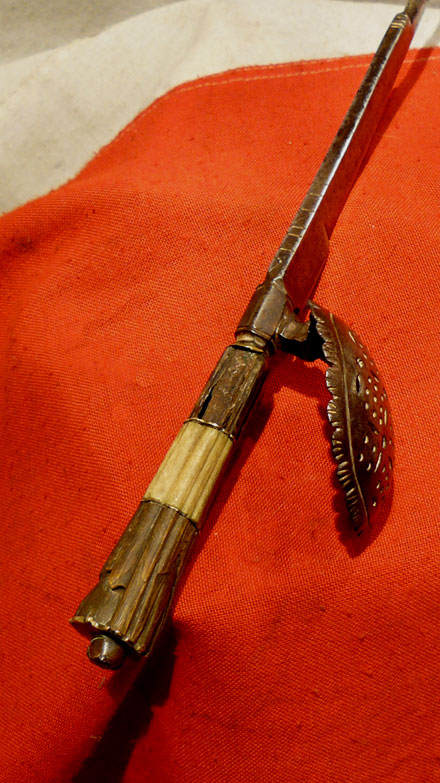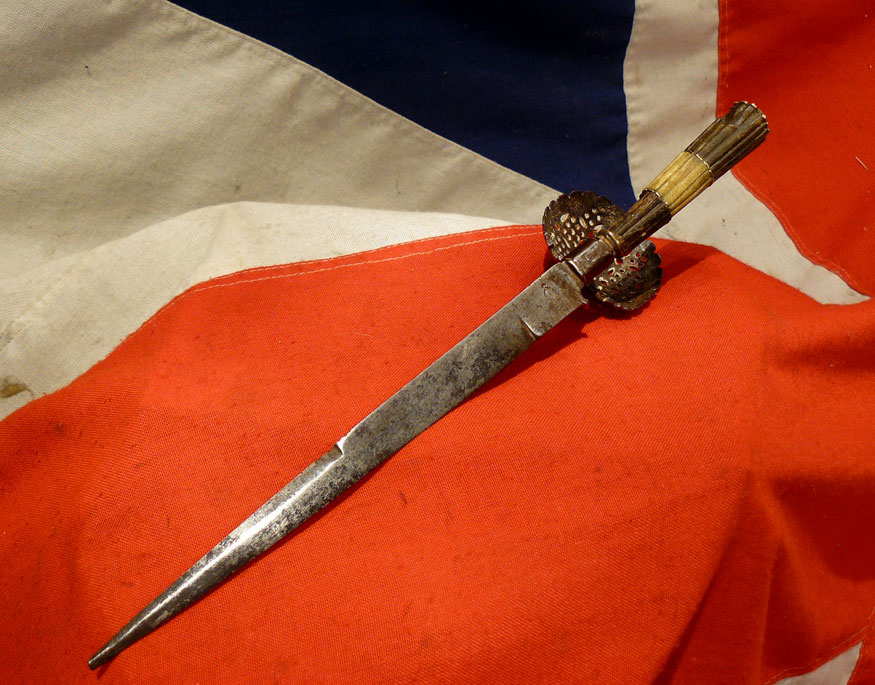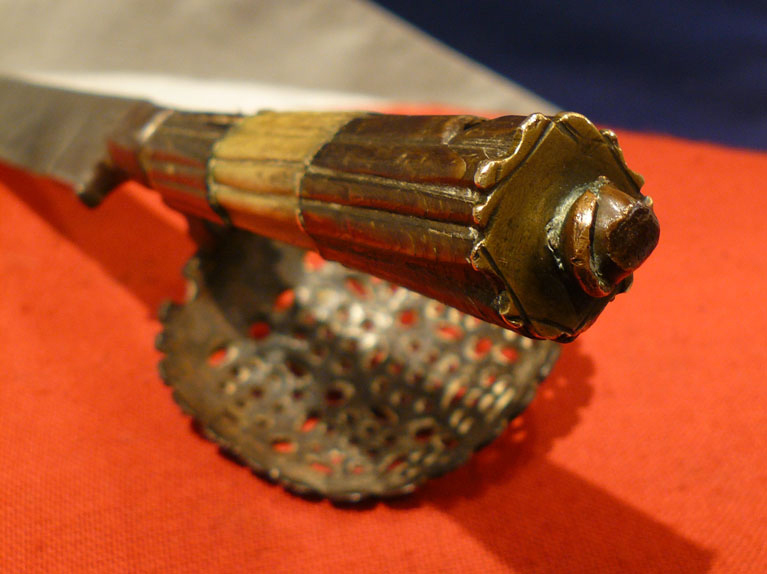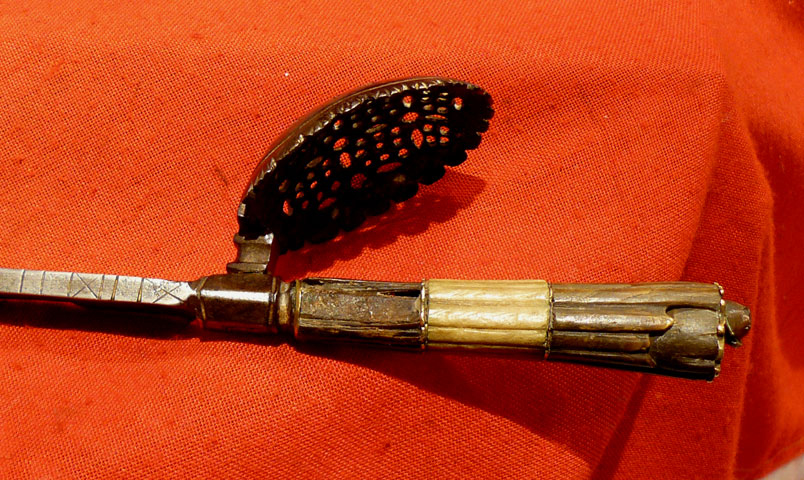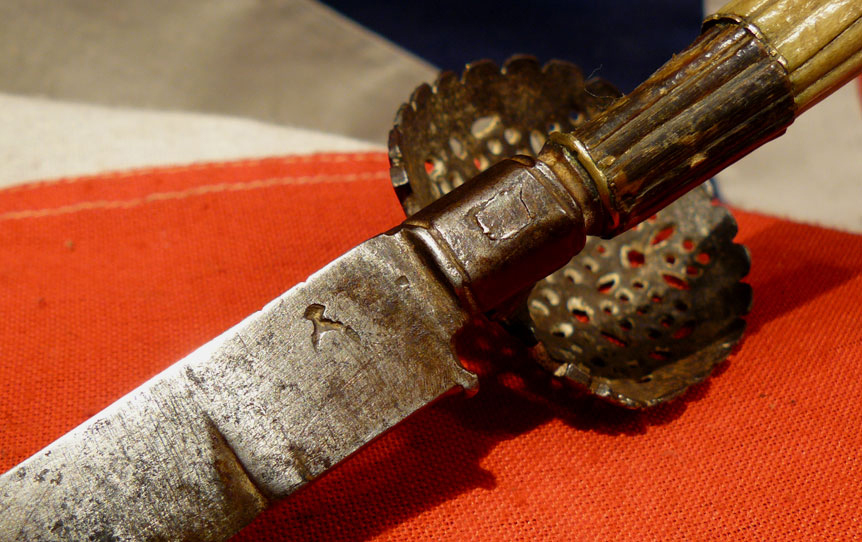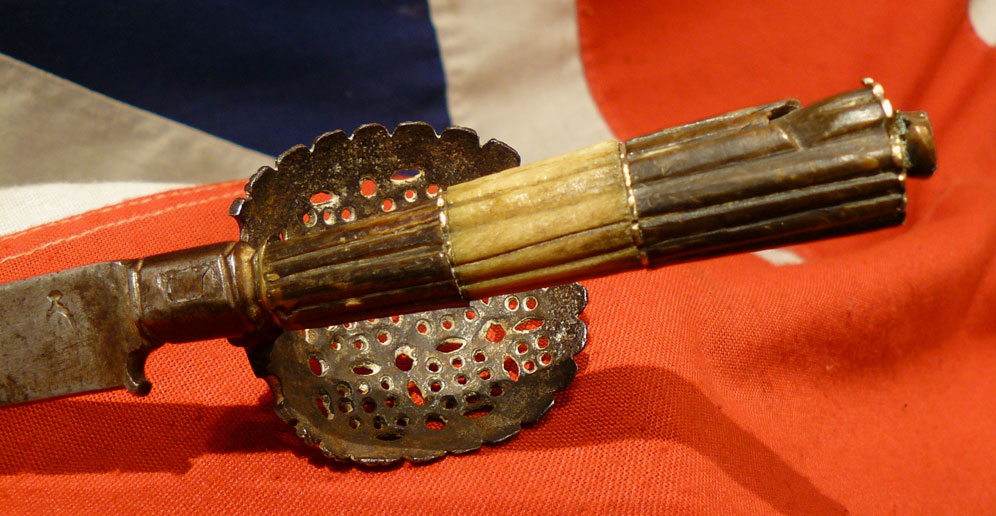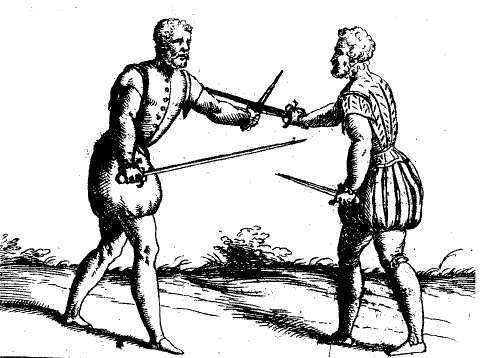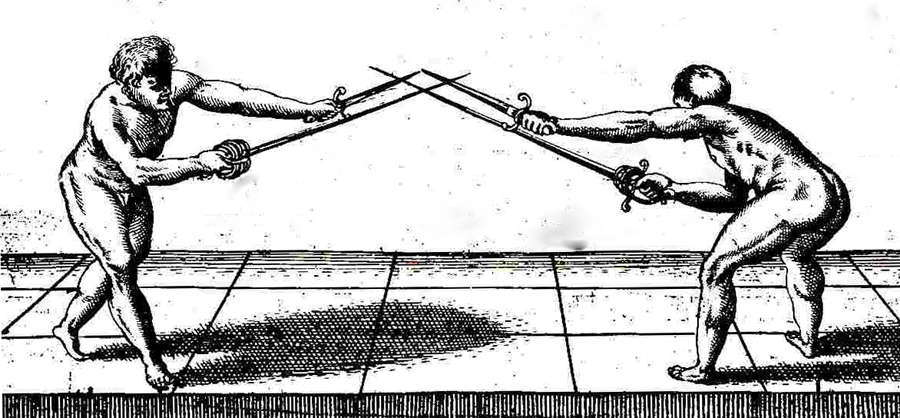A Most Rare & Beautiful 16th-17th Century Italian Maine Gauche. A Renaissance Period Duellist's Parrying, Shell Guard Dagger, For Combined Use With The Cup Hilt Or Swept Hilt Rapier
Long single edged blade with part false edge, and fine armourer's mark at the ricasso.
Triple section grip in horn and bone, bronze pommel cap. Beautifully pierced steel shell guard with scalloped edge. A most beautiful example of an early, Renaissance period 'main gauche' left hand duellist parrying dagger. When combined with a long swept or cup hilt rapier the pair make two formidable duo offensive and defensive duelling or combat weapons.
The parrying maine gauche dagger falls within the category of small hand-held weapons from the European late Middle Ages and early Renaissance. These weapons were used as off-hand weapons in conjunction with a single-handed sword. As the name implies they were designed to parry, or defend, more effectively than a simple dagger form, typically incorporating a wider guard, and often some other defensive features to better protect the hand, as well. The main-gauche is used mainly to assist in parrying incoming thrusts, while the dominant hand wields a rapier or similar longer weapon also intended for one-handed use.
It may also be used for attack if an opportunity arises. The general category includes two more specific kinds of weapon: sword breakers and trident daggers.
Its beautifully pierced shell guard was designed to be used as either, a hand protector, or, a sword blade catcher when reversed, depending of the swordsman's preference of his combat style.
The use of an off-hand weapon gradually fell out of favour as sword fighting evolved into the modern sport of fencing. The use of progressively lighter primary weapons such as the small sword, epee, and foil allowed for greater speed. Under these circumstances the use of just a primary weapon offered improvements in balance as well as a stance that offered a smaller target.
Code: 22288
1750.00 GBP

